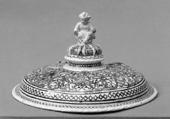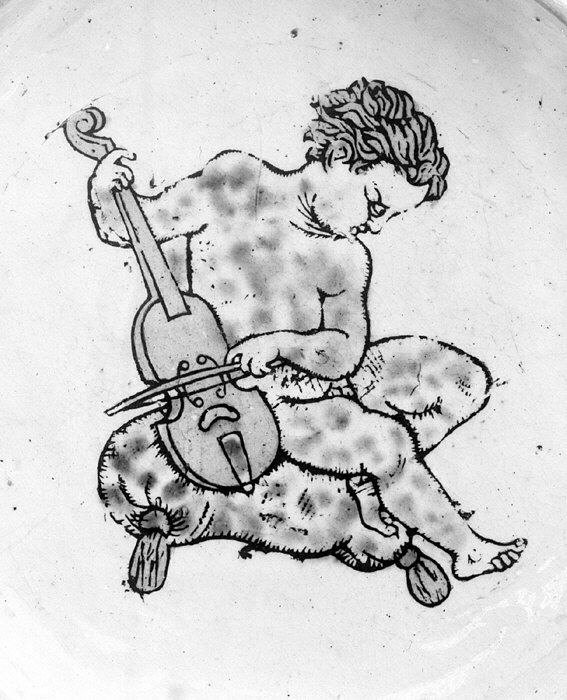Tazza cover
French, Saint-Porchaire or Paris
The decoration is a translation into pottery of mid-sixteenth-century engraved ornament originally derived from Italian sources but thoroughly naturalized in France by the mid-sixteenth century. The applied ornament is also found in contemporary goldsmiths' work, not only in France but also in such international centers as Praque and Nürnberg. The pictorial motif of a child playing a viol on the inner side was achieved by filling an impressed line with dark clay and then adding tints of blue and green lead glazes.
An intricate pattern of interlacing bands and vines serves as a backdrop for leaf and lizard ornaments radiating from the finial; the seated child at the top is mostly a replacement. On the underside is an image of a putto playing a viol; music-playing children appear in Fontainebleau’s Galerie François Ier (1533–40) and in the prints it inspired.
Due to rights restrictions, this image cannot be enlarged, viewed at full screen, or downloaded.
This artwork is meant to be viewed from right to left. Scroll left to view more.



